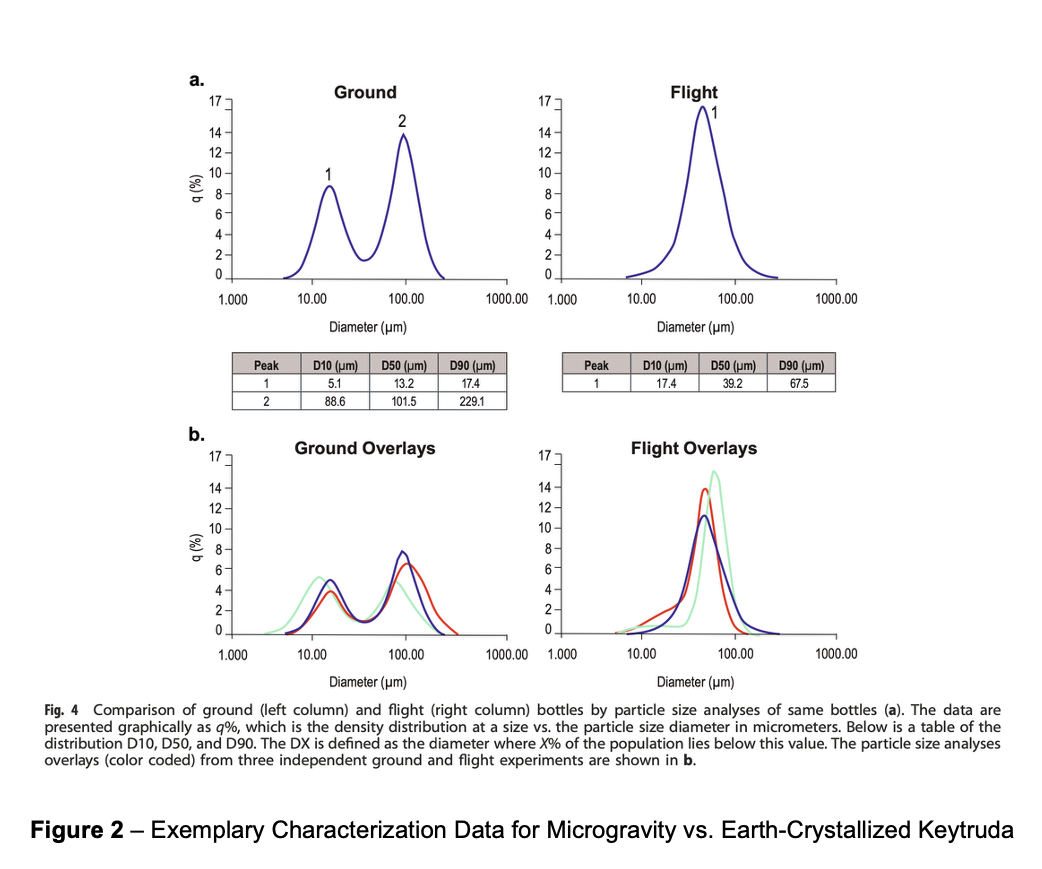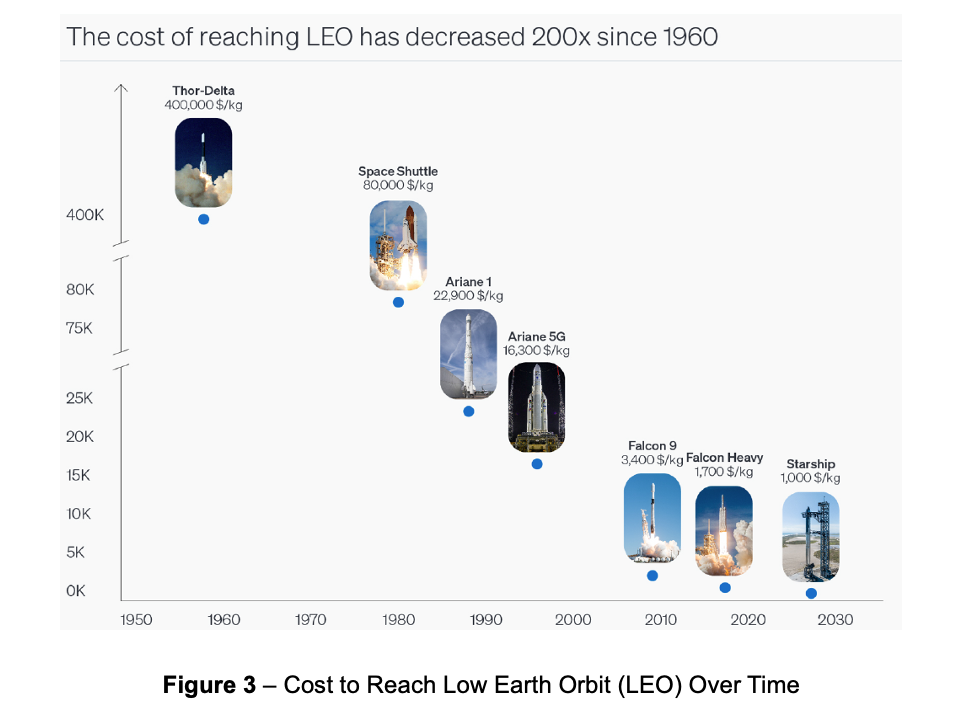By Cody Tranbarger, EIR at Atlas Enterprise, as a part of the From The Trenches characteristic of LifeSciVC
It’s an fascinating time to be occupied with house. Only a few months in the past, SpaceX captivated and impressed the world by catching a reusable rocket booster with mechanical chopsticks for the primary time. In the meantime, humanity’s march towards a multi-planetary future continues, with Mars on the itinerary for the 2030s (until you’re on Elon time). If that’s not compelling sufficient, house can at the least provide a psychological respite from our terrestrial woes – no gravity, no tariffs, no anti-science agenda.
Though it doesn’t get a lot consideration, biopharma has been experimenting in house for over 30 years. Merck, Bristol-Myers Squibb, Amgen, Eli Lilly, and Gilead have all performed microgravity analysis in orbit. In recent times, the renaissance in non-public house has rekindled curiosity in microgravity and spawned a extra radical imaginative and prescient for the long run: manufacturing medication in house.
The assertion conjures a picture extra apt for a sci-fi novel than industrial pursuit, however flying constellations of metal bioreactors could also be nearer than we predict. Final yr, Varda House Industries took a protracted step towards that imaginative and prescient, elevating a $90M Sequence B after efficiently launching a bioprocessing capsule into Low-Earth Orbit, creating a novel crystal of the HIV drug ritonavir in microgravity, and returning the fabric to Earth intact. Varda’s mission is “increasing the financial bounds of humankind,” starting with biomanufacturing in house.
Which begs the query, is space-based biomanufacturing science fiction or science reality?
Why House, Why Medication, and Why Now?
Gravity is one among 4 immutable forces of physics. Gravity’s affect on biology is so pervasive that a lot of its results go unnoticed and unappreciated. On the molecular stage, gravity underlies sedimentation and convection, the central ideas that govern fluid dynamics. In microgravity, these “certainties” fail, liberating organic processes to unfold in novel methods. Essentially, microgravity turns a fixed right into a variable, enabling net-new biology and the tantalizing potentialities that include it.
Microgravity has lengthy been an object of curiosity for scientists. The earliest experiments, carried out on NASA’s Skylab, date again to 1973. Analysis continued by the 90s on the House Shuttle, however solely after the 1998 launch of the Worldwide House Station (ISS) did microgravity analysis obtain adequate scale and consistency for substantial progress to made in unraveling gravity’s results on molecular and mobile biology. Within the subsequent 20 years, the variety of “microgravity” patents grew greater than 7-fold, highlighted by advances in protein crystallization and 3D tissue tradition.1,2,3
Amongst a protracted record of improvements, the “lowest” hanging fruit for commercialization is using microgravity-based crystallization to boost high-value prescribed drugs. Microgravity allows the expansion of bigger, extra uniform protein crystals (Determine 1)4, which has unlocked each larger decision structural information (precious for drug discovery and design) and the manufacturing of protein isoforms with distinctive drug properties. With respect to the latter, Merck’s microgravity analysis on Keytruda is an informative case examine.
Keytruda, which generates >$25B in annual gross sales, is among the many most necessary and impactful oncology medication of all time. In a pioneering examine on the ISS, Merck efficiently generated a crystalline suspension of Keytruda with considerably larger particle homogeneity and decrease viscosity relative to terrestrial controls (Determine 2). Relative to benchmarks, the space-grown crystalline suspension of Keytruda exhibited considerably decrease viscosity at therapeutic concentrations (>100mg/mL), suggesting superior compatibility with subcutaneous supply.5
Insights from this work have been subsequently utilized on Earth to advance subcutaneous formulations of Keytruda. Sooner or later, nevertheless, the drug product itself could possibly be the space-grown crystalline suspension. Comfort is an more and more widespread aggressive lever within the biopharma business, significantly for crowded targets. Microgravity crystallization, together with fashionable improvements in antibody engineering (e.g., half-life extension) and formulation / supply (e.g., massive quantity auto-injectors), may unlock hard-to-copy drug shows that present significant industrial differentiation.
Regardless of the progress made, microgravity analysis initiatives to this point have been exploratory, small-scale one-offs. Entry to and reliance on the ISS is a bottleneck. Demand exceeds provide, and there’s little hope in clearing the queue – many ongoing research gained’t even end previous to the ISS’s 2030 retirement.6 That chance hasn’t gone unnoticed by a burgeoning non-public house business. Fueled by outlier successes like SpaceX, the previous 10 years have seen practically $80B of funding in corporations constructing the way forward for house.7 Amongst them are startups like Varda House, Yuri Gravity, and SpacePharma, all of which have emerged with a mission to translate organic microgravity into industrial worth. Regardless of this sub-sector’s infancy, there are causes to imagine in its potential.
Bolstered by declining launch prices and rising drug costs, the financial paradigm has advanced; and the trajectory towards unit financial viability is more and more clear. First, the associated fee to achieve Low Earth Orbit (LEO) has dropped 200-fold – from ~$400,000/kg throughout the first period of economic house to ~$1,500/kg immediately – and is predicted to achieve 8 Second, high-value biologics stands out as the economically optimum place to begin for space-based manufacturing. Prescription drugs are among the many world’s most precious supplies by weight – main branded medication, significantly biologics, carry record costs that usually exceed $1M per kg.9 Keytruda, for instance, sports activities an inventory worth of $47M per kg. These converging developments are consultant of the present inflection level: the transition from exploratory analysis towards industrialized growth to unlock financial worth from space-based life science.
Sprinkling Star Mud on Biopharma Enterprise Fashions
Business construction within the nascent and dynamic space-based life science sector continues to be evolving. Broadly, the three enterprise fashions being employed all mimic these of terrestrial incumbents:
- Contract Growth & Manufacturing (CDMO) – suppliers of space-based manufacturing of and innovation on high-value biopharmaceuticals, equivalent to Varda
- Contract Analysis (CRO) – suppliers of microgravity research-as-a-service, equivalent to Yuri Gravity, Redwire, and SpacePharma
- Actual Property / Infrastructure (“REIT”) – builders of economic house stations and satellites that may host life science R&D amongst different actions, equivalent to Axiom House
On Earth, excellent companies have been in-built every vertical. House, although, is topic to distinct constraints. One key distinction is quantity – the cadence and cycle time of space-based experimentation is for much longer than the terrestrial different. For a fee-for-service CRO enterprise, this can be a elementary limitation that may possible relegate microgravity “research-as-a-service” to premium, non-recurring initiatives for the foreseeable future.
In distinction, the CDMO mannequin has traditionally supplied better optionality. “IP-Enhanced” CDMOs that present distinctive value-add, equivalent to cell strains (e.g., Lonza), formulation enhancement (e.g., Halozyme), or supply gadgets (e.g., Ypsomed), usually escape the fee-for-service paradigm, capturing economics by milestones and royalties. Whereas these money flows are uncovered to period and scientific danger, they’re bigger in mixture, stickier, and command a premium valuation. This mannequin – decrease quantity, better worth seize per unit – is extra suitable with the traits of space-based biomanufacturing and is the best chance path to financial viability and venture-scale returns within the near-to-mid-term. Varda, which is using an IP-Enhanced CDMO mannequin, has emerged as an early “winner” within the house, however it’s early. Varda hasn’t but proven industrial traction with biopharma, nor has it elucidated a core, differentiated use case that may enable it to take action.
Attaining Stage Separation
Regardless of early proof-of-concept, an bettering value construction, and availability of capital, the trail to sustained industrial success is extremely unsure. House-based biomanufacturing faces a formidable set of hurdles – amongst them:
Price: the absolutely loaded value of space-based biomanufacturing is basically unknowable immediately. Operation of bioreactors, upkeep of sterility, administration of thermal and mechanical stress, and payload restoration will all carry prices which can be exhausting to foretell, however could far exceed the price of launch alone.
Scale: in any biomanufacturing course of, scaling introduces new variables and complexities – this transition is usually troublesome even on Earth. Up to now, space-based biology expertise has been decidedly subscale – present space-based processes are producing milligrams to grams of fabric at greatest. Keytruda, in the meantime, is manufactured terrestrially in bioreactors of greater than 10,000 L. To achieve industrial viability, output will have to be scaled-out (working many missions in parallel, which is dear) or scaled-up (deploying bigger reactors, which is tough). Regardless, devoted bioproduction services can be important infrastructure, however the growth, validation, manufacturing, and deployment of such methods will not be assured.
Regulatory: there isn’t a regulatory framework for merchandise made in house. Regulators could fairly ask – is a drug crystallized in orbit the identical as if made on Earth? Resolving even primary questions like this for a space-produced drug can be difficult, given the boundaries to inspection and the problem of executing parallel validation runs. Preliminary discussions between FDA, NASA, and business have begun, however a solidified regulatory framework is years away. Till then, regulatory danger is more likely to stay an overhang for industrial efforts.
Adoption: the worth density of biologics is a double-edged sword. Biopharma corporations are strongly incentivized to reduce manufacturing danger, even on the expense of margins. This introduces a novel chicken-and-egg dynamic – reliability and reproducibility should be confirmed at scale to facilitate adoption, but adoption is required to show reliability and reproducibility.
How and when is that stalemate damaged? When space-based biomanufacturing finds its “killer app” – a differentiated, value-add use case that’s each uniquely attainable due to microgravity and unable to be recreated on Earth. The search continues, and the prize is substantial. Biopharma CDMOs generated ~$180B of income in 2024 – capturing simply single-digit share would place biomanufacturing among the many largest sectors in house.
Science Fiction or Science Reality?
The convergence of declining launch prices, increasing industrial infrastructure, and rising biopharma demand positions the life sciences among the many potential defining industries of the brand new house financial system. Whether or not the time is “proper” or not, house, in some kind, is an inevitability for our business. The underlying variables – scientific novelty, value-to-cost per unit weight, and monetization capability – align. Whereas it could sound like science fiction, space-based biomanufacturing is a rational and life like pursuit.
Nonetheless, this can be a 10+ yr story. An unlimited quantity of danger and uncertainty should be discharged alongside the way in which. The trail will virtually actually be iterative, and its origin lies at that first “killer app” – differentiated use instances at small scales drive additional funding, which unlocks new use instances at bigger scales, and so forth. Past that, the sector wants a champion – a visionary that may evangelize, encourage, and affect whereas withstanding the volatility. Hope is as necessary a variable because the economics.
In any case, science fiction vs. science reality is usually a product of notion.
Thanks to my buddy and colleague Matt Sears for his contributions to this text.
References
- DeLucas, L J et al. “Protein crystal development in microgravity.” Science vol. 246,4930 (1989): 651-4.
- Ma, Chiyuan et al. “3D cell tradition mannequin: From floor experiment to microgravity examine.” Frontiers in bioengineering and biotechnology vol. 11 1136583. 24 Mar. 2023.
- Hirschberg, Carsten, et al. “The Potential of Microgravity: How Firms throughout Sectors Can Enterprise into House.” McKinsey & Firm, 13 June 2022.
- Choi, Charles Q. “House Could Be the Finest Place to Develop Bone Formation Protein Crystals.” House.com, 17 Aug. 2016.
- Reichert, Paul et al. “Pembrolizumab microgravity crystallization experimentation.” NPJ microgravity vol. 5 28. 2 Dec. 2019.
- NASA. NASA’s Administration of the Worldwide House Station and Efforts to Commercialize Low Earth Orbit (No. Report No. IG-22-005). 2021.
- House Capital. House Funding Quarterly: Q1 2025. House Capital, 9 Apr. 2025.
- Lee-Brown, Donald. “Is House Investable?” Colossus Assessment, Nov. 2024.
- McCormick, Packy, and Elliot Hershberg. “Varda: The House Drug Manufacturing facility.” Not Boring, 12 June 2023.



